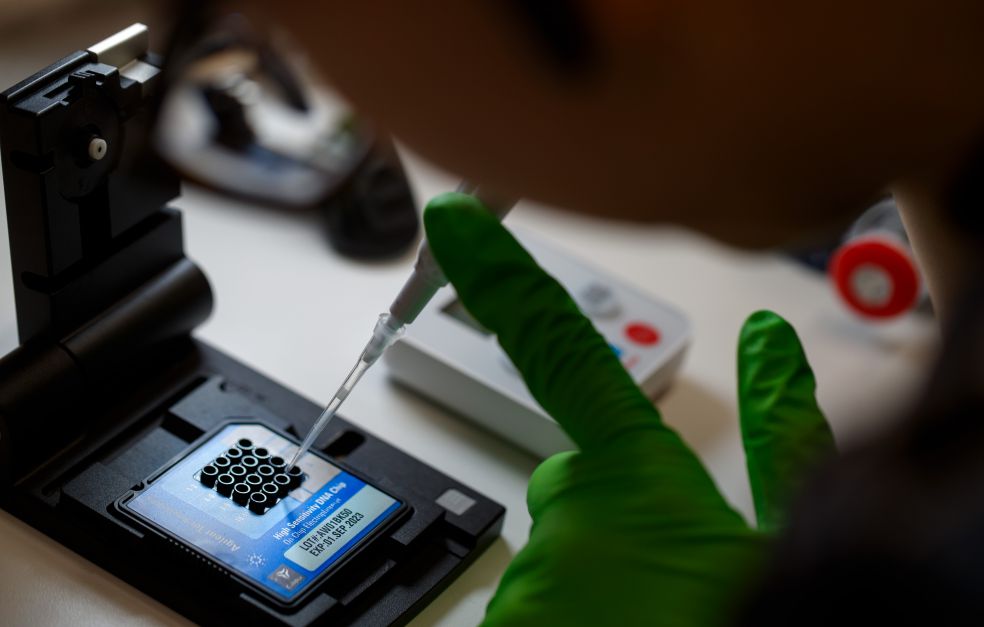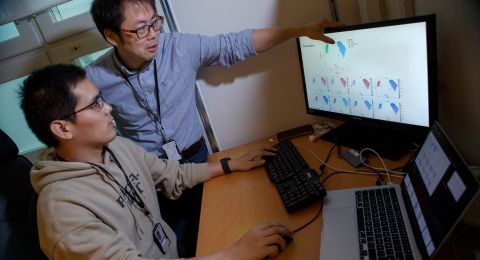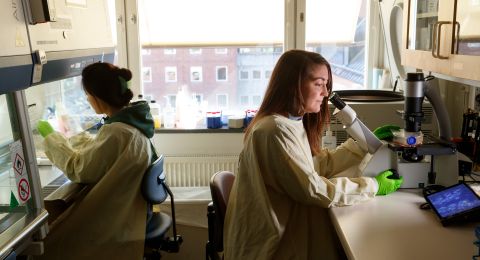Björn Reinius’ studies of X chromosomes have yielded new clues about what happens in cells when a chromosome copy is lost during cell division. His research team has discovered that, under certain conditions, the remaining copy may become hyperactive to compensate for the loss. He wants to learn more about how cancer cells react to chromosomal changes.
Björn Reinius
PhD, Developmental Biology
Wallenberg Academy Fellow 2021
Institution:
Karolinska Institutet
Research field:
Regulation of genes, focusing on inactivation of X chromosomes and dosage compensation.
Technological advances have made it possible to study the most minute components and mechanisms of life in individual cells. These are exciting times for researchers in molecular biology, not least from a scientific history perspective, as Reinius explains:
“The present and coming decades are a golden age for life sciences. The field is ripe e to make fundamental discoveries, as also my small research team has done. It’s a very exciting time.”
Reinius is studying molecular processes in cells when a copy in a chromosome pair is lost, or when gene activity in a copy is shut down. Loss of entire chromosomes or large parts of them is common when cells age or become cancerous.
“I’m studying molecular processes that are essential to the correct working of the cell and that will ultimately be of medical benefit. We can now see that basic research into various molecular processes in the cell is being put to use in new cancer therapies, for example.”
“The aim of our research is that it should ultimately produce medical benefit. Another aspect is the sport of carrying out competitive research, but that is less of a driver as you get older and become more mature.”
X chromosome compensates
Working in his lab at Karolinska Institutet in Solna, just north of Stockholm, Reinius has discovered that when one of a pair of chromosomes in the cell disappears, the other chromosome is able to compensate in some cases. In other cases, however, the cell does not seem able to achieve this. The project began with studies of the X chromosome. There are normally 23 pairs of chromosomes in each cell in the body.
“Our DNA is divided into microscopic packages called chromosomes. We normally have two copies of all chromosomes, one from the mother and one from the father – except for the sex chromosomes, where women receive one X chromosome from their mother and one from their father, and men receive an X chromosome from their mother and a Y chromosome from their father. X and Y originally consisted of the same pair of chromosomes, but evolution has caused the Y chromosome to lose most of its genes, which means that men’s cells only bear a single copy of the genes located on X.”
The genes in our DNA code for proteins that are needed to perform cell functions. The fact that women’s cells contain two copies of all the X chromosome’s genes while men’s cells only contain a single copy creates a dilemma in obtaining correct X-gene dosage in each of the sexes. Studying that dilemma is a fascinating task, as Reinius explains:
“You have to bear in mind that the cell is a highly complicated biochemical machine, the components of which must be present in the right proportions. Hence, balance in the cells’ program for gene expression is critical in order to maintain cell function and stability. We’ve seen that cells solve this problem in two ways. The first is to inactivate one of the two X chromosomes in women’s cells. The other is that in both men and women the single remaining active X chromosome becomes hyperactive.”
Reinius’ research team has established when inactivation and regulation of X chromosomes occur during early embryonic development.
“We’ve also identified parts of the mechanism by which the cell upregulates the remaining single chromosome. These are fascinating and completely new findings. We have seen that in female mouse embryos hyperactivation occurs in parallel with inactivation of the other X chromosome copy. This results from an increase in the frequency of the pulses that produce the messenger molecules – mRNA – at the same time as the number of molecules in each pulse remains unchanged. This enables the cells to keep the gene dosage virtually constant even when one X chromosome is being inactivated.”
Mechanism relevant to cancer
Even as a teenager Reinius knew he wanted to be a researcher. Later, during his basic education at Uppsala University he focused on chemistry, biology and mathematics. He then pursued a PhD in developmental biology and embryonic development, followed postdoctoral positions at the University of Gothenburg and the Ludwig Institute for Cancer Research. He has had his own research team at the Department of Medical Biochemistry and Biophysics at Karolinska Institutet since 2018.
The team is using new generation sequencing equipment to study individual cells and molecular mechanisms, gene expression, DNA and RNA. Their experiments generate large volumes of data that are then analyzed in various computational models. As a Wallenberg Academy Fellow, Reinius is delving into the chromosomes’ dosage compensation mechanism.
“Dosage compensation is a fundamental challenge for our cells, because if it doesn’t work, the embryo will not survive. I’m now systematically studying what happens if we remove a copy from other chromosomes throughout our genome.”
Reinius explains that this is of particular interest in the context of cancer, because nearly all cancers involve major changes in the number of chromosomes copied.
“We’re interested in exactly what happens in a cancer cell when a chromosome copy is wholly or partially lost. How does the remaining part respond, and is it similar to the way the X chromosome’s dosage response works? Why do certain chromosome changes lead to cancer, whereas others are tolerated by our cells? We have exciting preliminary data on this subject.”
Text Susanne Rosén
Translation Maxwell Arding
Photo Magnus Bergström






